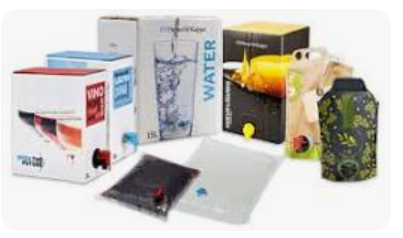In the ever-evolving world of packaging, innovations are constantly reshaping the way products are stored, transported, and presented to consumers.
One such innovation that has transformed the handling of liquid products is bag-in-box packaging.
This ingenious solution combines a bag, spout, fitment, and an outer box to create a system that ensures efficiency, hygiene, and extended shelf life for a variety of liquid and semiliquid products.
What is bag-in-box packaging?
At its core, bag-in-box packaging is a comprehensive system designed for the transportation and dispensing of liquids.
The packaging consists of a bag, usually made of layers of film sealed together, fitted with a spout or fitment, and then enclosed in an outer box.
Each component plays a crucial role in maintaining the quality of the product from the filling process through to its end use.
- Bag: Constructed from layers of film, the bag serves as the primary container, safeguarding the liquid product from external contaminants and ensuring its integrity.
- Spout: The plastic-framed opening, sealed into the bag during production, serves as the entry point for filling the product. It is then covered by a cap, dispensing tap, or connector, depending on the intended use.
- Fitment: A broader category encompassing spouts, caps, valves, and more, fitments attach to the bag spout. They range from simple caps to sophisticated dispensing valves, enhancing the versatility of bag-in-box packaging.
- Box: The outer package that holds the capped and filled bag, providing structural support and protection during transportation.
The process involves filling the bag with the liquid product, securing it with a fitment, and placing it in a box to ensure safety and ease of dispensing.
Bag-in-box history
Pioneered and patented by William R Scholle in 1955, bag-in-box packaging initially found its footing in the car industry, transporting battery acid to filling stations and repair shops.
After perfecting the aseptic filling process in 1956, bag-in-box swiftly expanded into the food and beverage sector. Today, it is a cornerstone in industries such as dairy, beverages, wines, and industrial fluids.
Advantages of bag-in-box packaging
Bag-in-box packaging offers practical advantages for manufacturers, retailers, and end-users alike:
- Transportation and storage savings: The compact design of the bag-in-box reduces transportation costs and storage space, making it an economical choice.
- Extended product shelf life: Designed to protect against external contaminants, the packaging ensures an extended shelf life for liquid and semiliquid products.
- Hygienic and safe filling process: The aseptic filling process prevents contamination, maintaining the highest product quality.
- User-friendly dispensing: Whether in the dairy, beverage, or industrial fluid industry, bag-in-box packaging facilitates easy dispensing.
Bag-in-box retail shelves stand out
In the competitive world of retail, packaging is a key player in catching the consumer's eye. Bag-in-box packaging, with its unique design and branding possibilities, serves as an effective in-store advertising medium.
Notable examples include the sophisticated bags used for fine wines, which act as billboards for the brand on store shelves.
Wide range of uses
Originally developed for wine in 1955, bag-in-box has evolved into a versatile and cost-effective solution for various foods and beverages.
The hermetically sealed bags protect the product from external contaminants, making it ideal for maintaining the highest product quality across industries.
Is bag-in-box packaging losing ground?
In recent years, bag-in-box packaging has faced challenges as new trends emerge.
Bag-in-box packaging has undoubtedly left an indelible mark on the world of liquid packaging. From its humble beginnings in the car industry to becoming a staple in various sectors, it has proven its worth in terms of efficiency and versatility.
However, with changing consumer preferences and advancements in packaging technology, the future of bag-in-box may see shifts in popularity.









